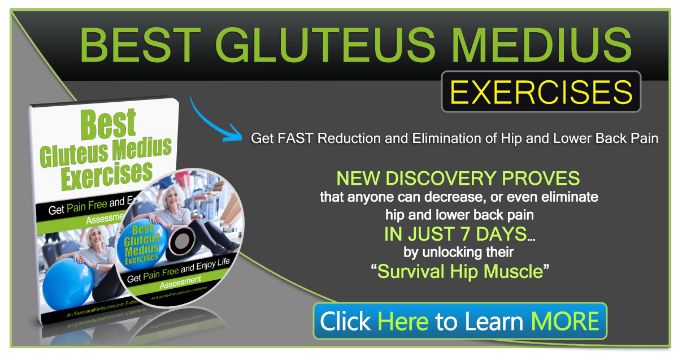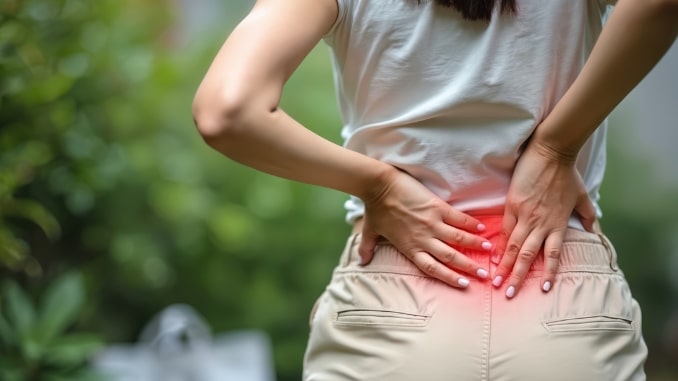
If you suffer from hip arthritis, you know how painful and limiting it can be—whether it’s a dull ache in the hip joint or a sharp jolt of severe hip pain during movement [1]. The key to relief isn’t just resting—it’s strategic movement.
Targeted exercises for hip pain arthritis can ease tension, strengthen muscles, and increase mobility, even if your hip flexors or buttock muscles feel stiff or weak.
Whether you’re just starting or looking to add to your recovery routine, these low-impact, physical therapist-approved movements can make a real difference. Let’s get right into the step-by-step how-to, followed by the purpose behind each move.
Tip: Always check with your healthcare professional before starting new exercise routines, especially if you’re experiencing severe hip pain.
Nonweight-bearing Positions:
1. Supine Knee-to-Chest Stretch
Targets: Hip flexors, lower back, and improves hip range of motion.
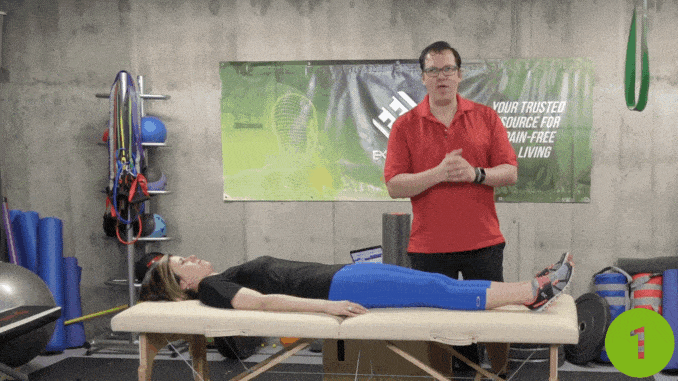
- Lie on your back on the floor or bed, maintaining proper alignment with your head, shoulders, hips, and legs.
- Engage your core and gently bend one leg, bringing your knee toward your chest.
- Use your hand to pull your knee closer to intensify the stretch.
- Lower your leg back down to return to the starting position, and then repeat the movement on the opposite leg.
2. Bent-Knee Drop-Outs
Targets: Internal and external hip rotation, hip abduction, and hip adduction.
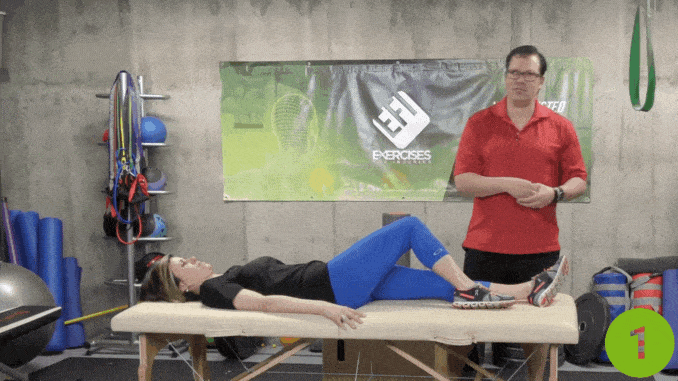
- Lie on your back on the floor, maintaining proper alignment with your head, shoulders, hips, and legs.
- Bend one knee and place both hands at your sides.
- Engage your core, then gently lower your bent knee out to the side and bring it back toward the center.
- Return to the starting position, and then repeat the movement on the opposite leg.
3. Side-Lying Leg Raise
Targets: Gluteus medius, buttock muscles, and hip abduction for better joint support.
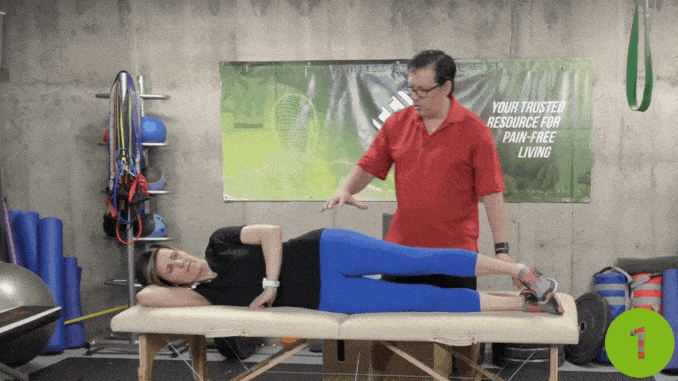
- Lie on your side with your head resting on your bent arm, keeping your head, shoulders, hips, and legs in proper alignment.
- Contract your core, then lift your top leg to a 45-degree angle, ensuring your toes point straight ahead to maintain alignment.
- Lower your leg back down to the starting position, and then repeat the movement on the opposite side.
4. Clamshells
Target: Isolates and strengthens glute medius, and hip stabilizers.
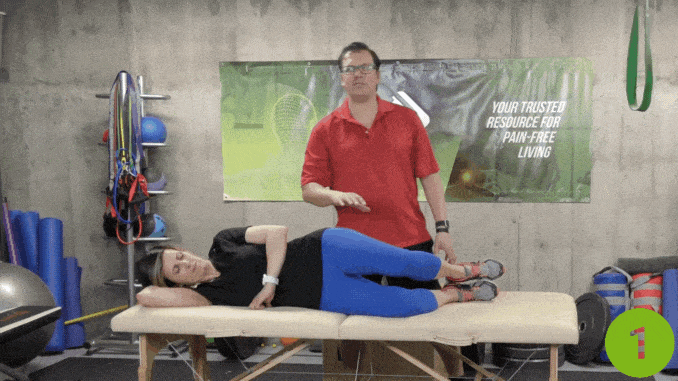
- Lie on your side, with your knees bent and head resting on your bent arm.
- Maintain proper alignment with your head, shoulders, and hips.
- Engage your core, then lift your top knee toward the ceiling while keeping your feet together.
- Lower your knee back down to return to the starting position, and then repeat the movement on the opposite side.
Weight-Bearing Position
5. Standing Hamstring Curl
Targets: Hamstring stretch, strengthens hips, glutes, and improves stability.
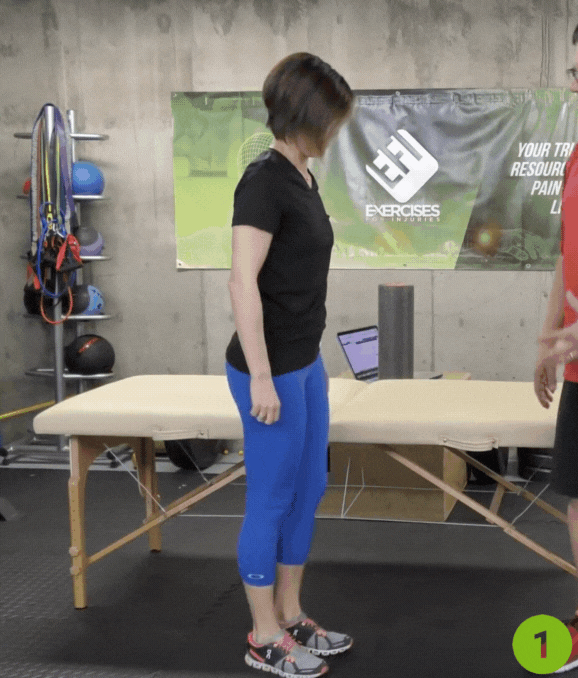
- Begin in an upright standing position with your feet shoulder-width apart, maintaining proper alignment with your head, shoulders, hips, and legs.
- Rest your hands on a stable surface for balance, if needed.
- Bend one knee, bringing your heel up toward your seat, ideally to a 90-degree angle.
- Hold this position for at least 10 seconds.
- Lower your foot back down to return to the starting position, and then repeat the movement on the opposite side.
“Strengthening the muscles around the hip—especially the glutes and core—can significantly reduce pain and improve function for people with hip osteoarthritis. Targeted exercises improve joint stability and reduce the load on the affected area.” —Dr. David J. Hunter, MD, PhD, Rheumatologist and Professor of Medicine at Tufts University School of Medicine
Why These Exercises Work for Hip Arthritis
These movements are designed to be low-intensity yet effective, especially if you’re dealing with hip arthritis or recovering from joint inflammation. They:
- Activate and strengthen your buttock [2] and hip flexor muscles
- Improve mobility in the hip joint
- Provide a gentle stretch to tight muscles
- Enhance leg control and balance
Starting with nonweight-bearing exercises allows your body to adjust before introducing standing, weight-bearing movements. This progression protects the affected leg while strengthening the opposite leg for overall balance.
Expert Tips to Protect Your Hips
- Avoid sitting for long periods – hip joints under constant flexion can worsen stiffness.
- Break up desk time with light movement or a hip flexor [3] stretch.
- If your lower back mobility is poor, it can increase strain on your hips.
- Add resistance tools like a resistance band or small ankle weights once you’re comfortable.
Final Thoughts: Take Charge of Your Hip Health Today
Dealing with hip pain from arthritis doesn’t mean you have to stop moving—in fact, the right movement is the medicine. Start with these simple but powerful exercises for hip pain arthritis, listen to your body, and stay consistent.
Over time, you’ll notice a better range of motion, less pain, and a stronger foundation.
If you want to go further, check out our full guide on The Best Gluteus Medius Exercises to supercharge your recovery. Check out now!
Frequently Asked Questions
What are the best exercises for hip arthritis pain relief?
The most effective exercises include nonweight-bearing movements like supine knee-to-chest, clamshells, and side-lying leg lifts. These gently stretch and strengthen muscles around the hip joint without adding stress. As strength builds, you can incorporate standing exercises like hamstring curls to improve function and balance.
Can I do these exercises if I have severe hip pain?
Yes—but with caution. If you’re experiencing severe hip pain, start with the gentlest movements, such as the knee-to-chest stretch, and avoid any motion that causes sharp discomfort. Always consult a healthcare professional or physical therapist to tailor a plan to your needs.
How often should I do hip arthritis exercises?
Aim for 3 to 5 times per week, depending on your pain level and ability. Consistency is key. Listen to your body, and gradually increase reps or sets as your hips, glutes, and thigh muscles strengthen.
Can stretching help hip arthritis?
Absolutely. Gentle hip flexor stretches and hamstring stretches can reduce stiffness, improve range of motion, and alleviate pressure on the affected leg. Stretching also helps improve posture, which can reduce overall joint stress.

